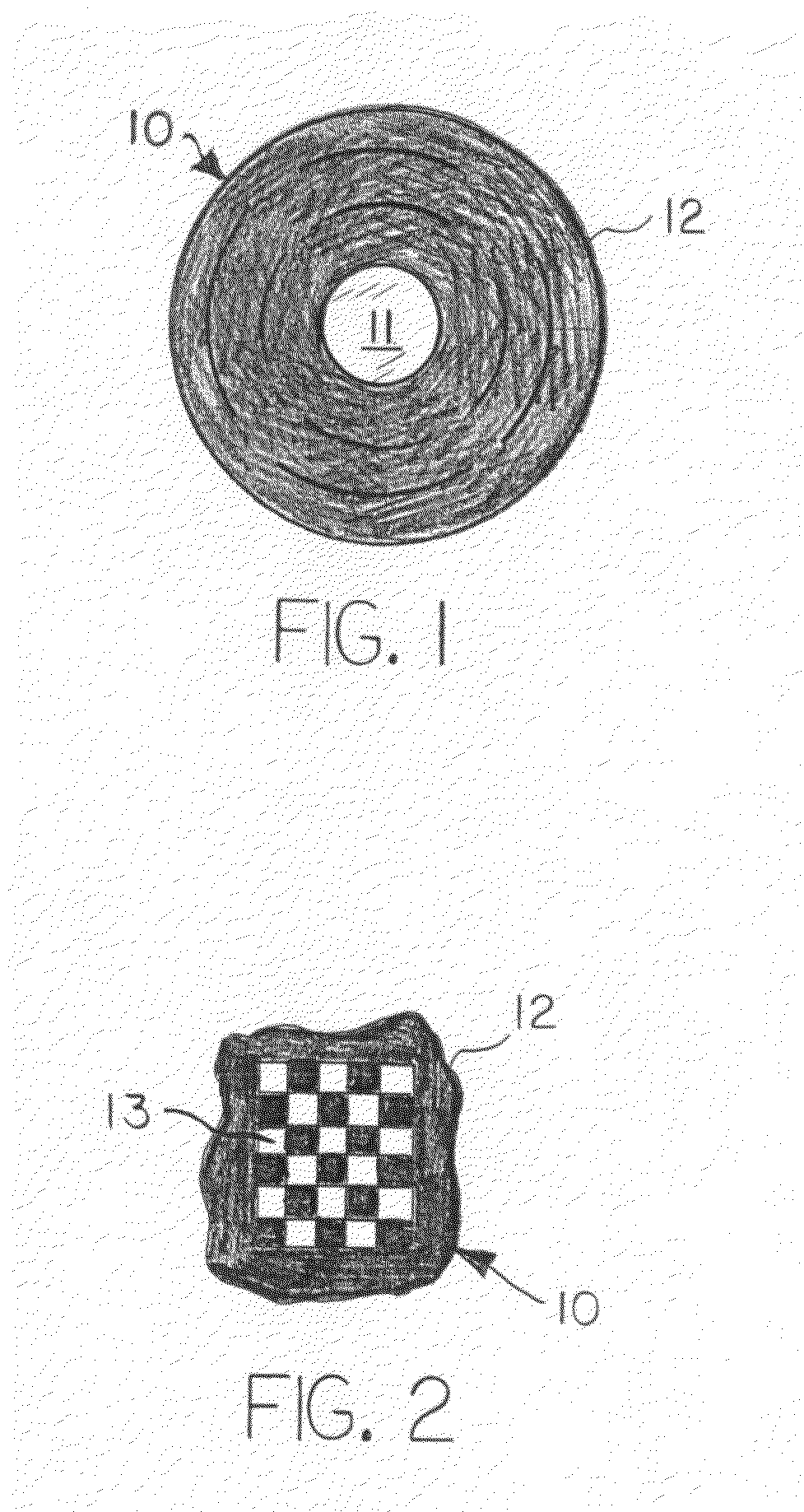Corneal crosslinking methodology using custom etched contact lenses
a corneal collagen and contact lens technology, applied in the field of treatment methodologies, can solve the problems of corneal weakening, moderate or severe blurriness or astigmatism, and the normal curvature of the cornea is replaced by localized bulging or distortion, and achieves the effects of reducing the penetration of ultraviolet light, and increasing the rigidity of the corneal surfa
- Summary
- Abstract
- Description
- Claims
- Application Information
AI Technical Summary
Benefits of technology
Problems solved by technology
Method used
Image
Examples
Embodiment Construction
[0010]In general, the invention is an improved methodology for addressing corneal abnormalities, such as for example Keratoconus (KCN), infectious keratitis, corneal ectasia or problems resulting from Penetrating Keratoplasty or injury, wherein a portion of the cornea is misshapen or weakened and it is desirable to increase the rigidity and stability of the weakened region. In a known technique, a corneal crosslinking solution, such as riboflavin, is applied to the surface of the cornea, followed by exposure to UV light. The UV light exposure results in the crosslinking of the collagen fibers in the cornea, thereby increasing the rigidity and stability of the cornea.
[0011]In a basic embodiment, the methodology of the invention comprises the steps of creating a contact lens 10 having portions of the lens surface etched to either preclude completely or reduce the passage of UV light through the lens in the etched areas 12, applying a known corneal crosslinking solution, such as ribofl...
PUM
 Login to View More
Login to View More Abstract
Description
Claims
Application Information
 Login to View More
Login to View More - R&D
- Intellectual Property
- Life Sciences
- Materials
- Tech Scout
- Unparalleled Data Quality
- Higher Quality Content
- 60% Fewer Hallucinations
Browse by: Latest US Patents, China's latest patents, Technical Efficacy Thesaurus, Application Domain, Technology Topic, Popular Technical Reports.
© 2025 PatSnap. All rights reserved.Legal|Privacy policy|Modern Slavery Act Transparency Statement|Sitemap|About US| Contact US: help@patsnap.com


